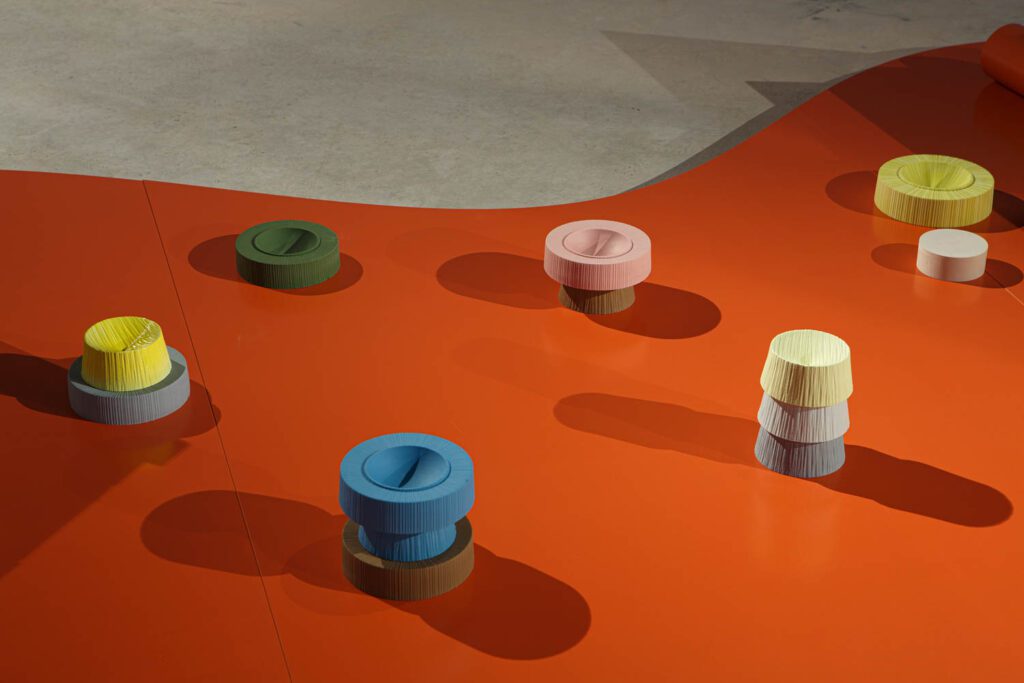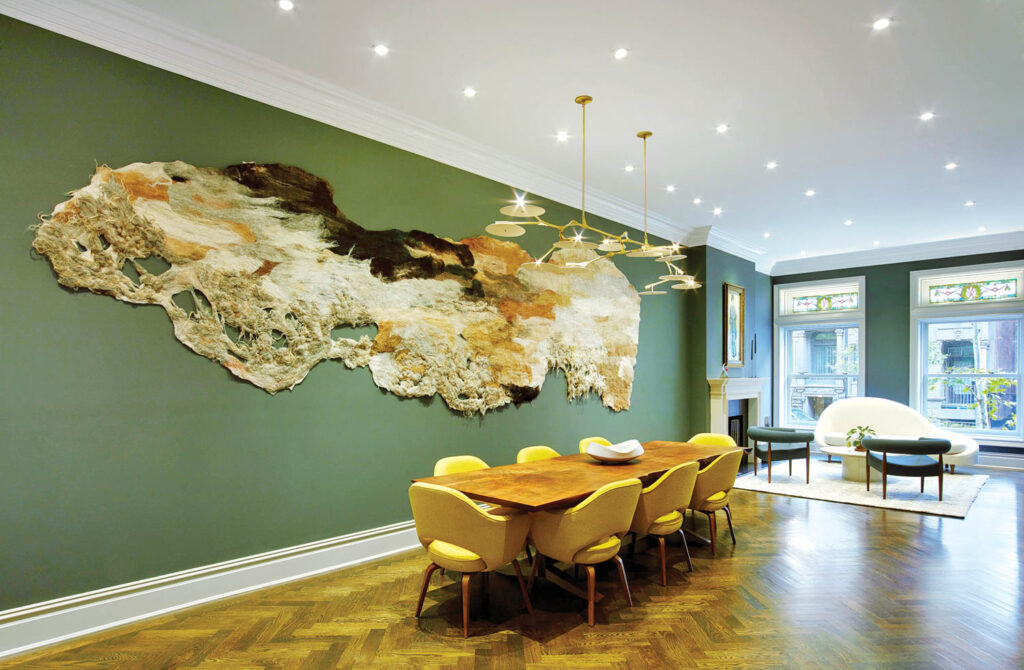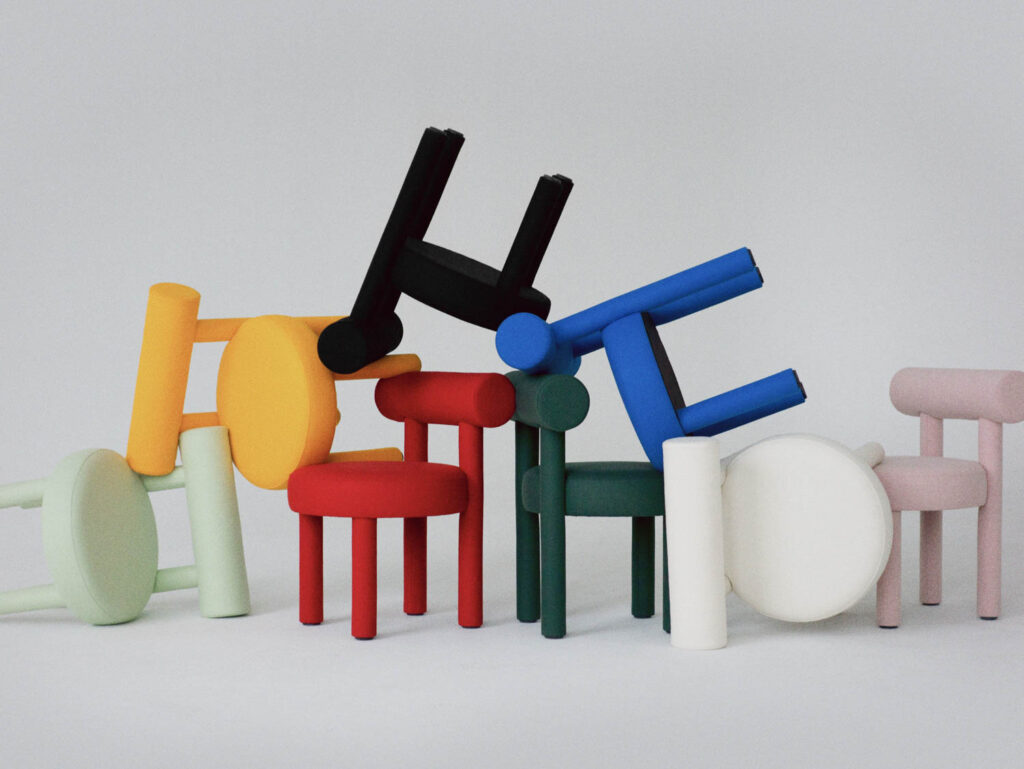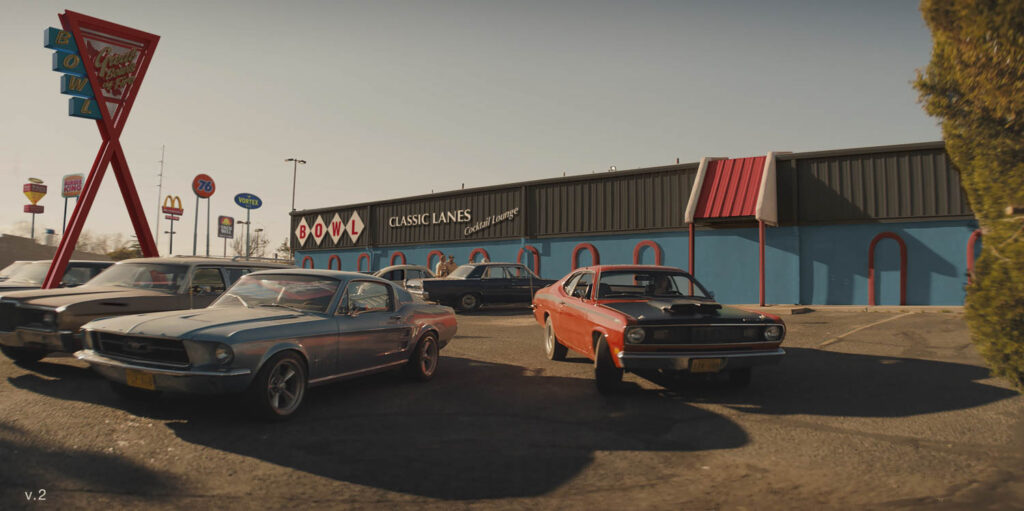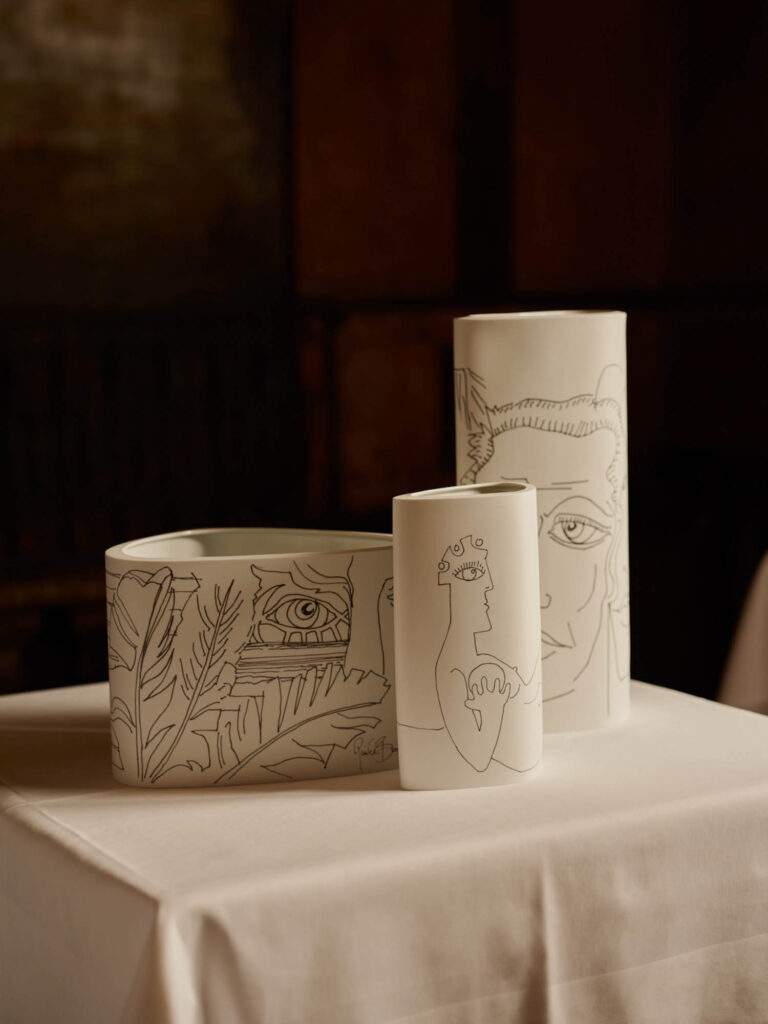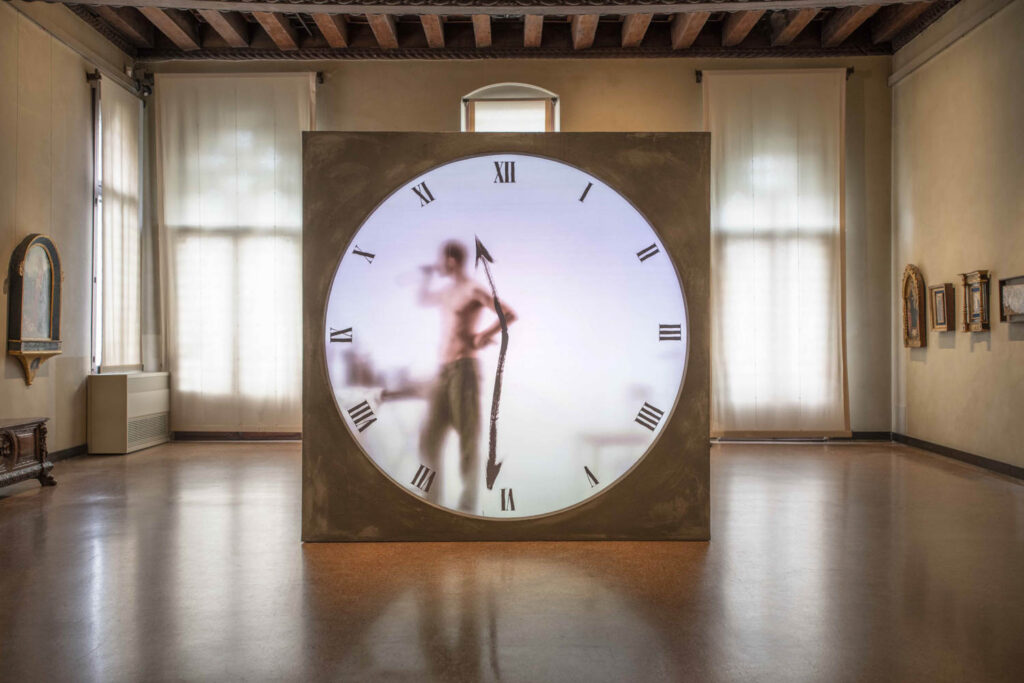
10 Questions With… Maarten Baas
Dutch designer Maarten Baas and Hollywood may sound like an odd pairing at first but the City of Angels is indeed a fitting background for the creative’s whimsical furnishings and artworks. His new exhibition, “Play Time,” at Carpenters Workshop Gallery in Los Angeles taps into his signature notions of time captured through the raw emotionality of a child, as well as the weighty adult consciousness of its unstoppable flow. “Los Angeles for me is about Hollywood and film—a film is a reflection of a story in a virtual world which is exactly what I am trying to do, too,” Baas tells Interior Design.
The show, which opened in mid-February anchored by the Frieze L.A. art fair, breaks down the key elements in Baas’s nearly two-decade practice. Brass and walnut cabinets recall sketches on a child’s notebook with their cartoonish forms. The desktop light perched over Close Parity Cabinet With Light recalls a cardboard cutout toy shaped by a scissor’s irregular move, while Close Parity Asymmetric Cabinet (both from 2016) has anthropomorphic presence, like an otherworldly alien whose eyes are replaced by drawer knobs. Perhaps the most striking series in the bunch is Children’s Clocks (2022) for which Baas asked 720 different children to draw a minute by hand. The digital screens inside stainless steel and silk clocks in a palette of what Baas calls “play dough colors,” such as the neon shades orange, green and red, run the videos of minutes being drawn. “My work is actually a merger between physical objects, video art and performance, which all come all together,” the designer adds.
Baas came into wide recognition in 2002 with Smoke furniture series in which he burnt antique-looking furniture pieces for his graduation piece at Design Academy Eindhoven. Another highlight came in 2016 when he created a version of the Real Time piece, which combines the traditional concept of a grandfather clock with immediacy of performance for Amsterdam’s Schiphol Airport. The larger-than-life video structures show Baas himself, or a performer, update the time by hand in a Sisyphean effort.
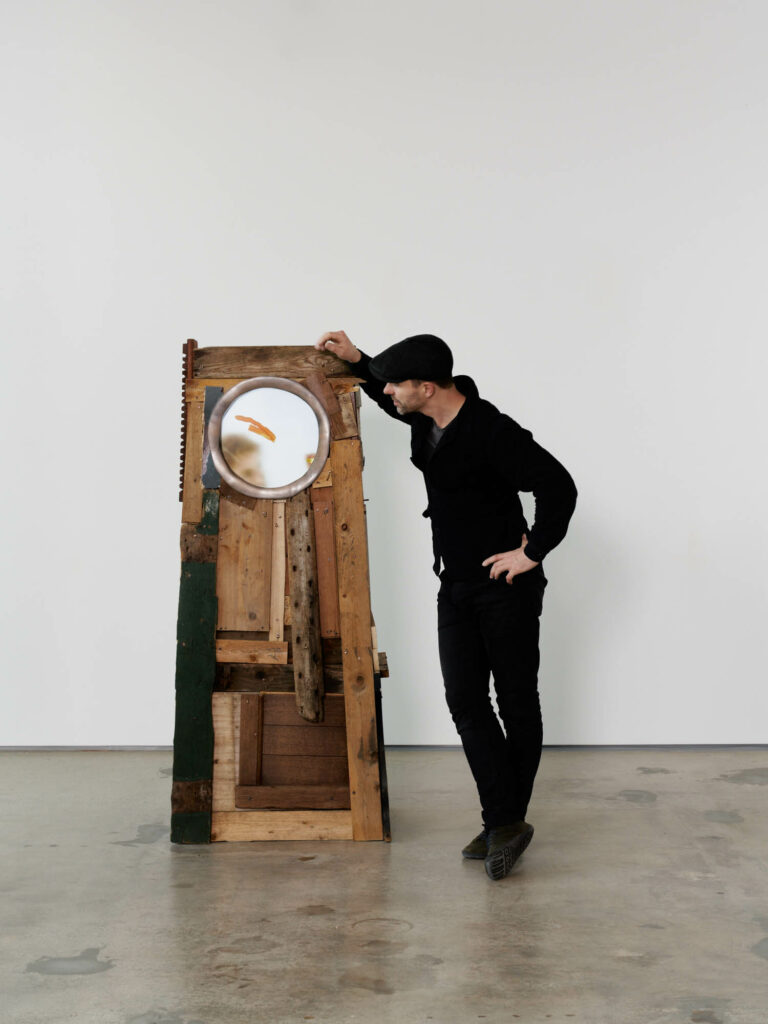
Today, the 45-year-old designer works from a large warehouse in Den Bosch in the south of the Netherlands with a team of 10 employees, some of whom work at the office and others at the workshop. “I see there as my kindergarten, my playground, in which I can experiment with all the techniques and materials that I wish to,” he says about his studio life.
Designer Maarten Baas Talks “Play Time” and More
Interior Design: How do you approach the concept of play, which also coincides with a time of untamed self expression?
Maarten Baas: I visualized myself as a child. Of course, everybody once was a child, so we can go back in our memories, but I didn’t want to do that in a rational way. I rather wanted to do so in a “how to stay energetic way,” just really feel the energy of how I was as a child. Maybe, this was a little similar to how an athlete would visualize their race. Before actually going for their Olympic medal, they visualize how they reach the finish line. In this sense, this visualization is a meditation on getting into the energy of a child. Then, I come in a gray zone between my own young self and the actual mature 44-year-old Maarten. The interesting part was getting into this verge between a child and an adult, the period when you get wiser. By growing up though, we lose a lot of potential and creativity. I instead wanted to have the best of both worlds and see if I can reach a level in which I’m still a child, but with the wisdom of an adult. It was a very interesting journey.
ID: Clay is commonly used in play. How do you view the material?
MB: My first work with clay was a series of furniture in 2006. I use industrial clay, so it’s not baked in an oven but it has a synthetic process. I wanted the clay works to look like the aesthetics of a child’s sculpture or a child’s drawing. The clumsiness and spontaneity make the work interesting, maybe give some Art Brut aesthetics, which I really appreciate. I combined the skills of an adult with the aesthetics of a child. I find the idea of making a shape with your hands and keeping that shape as the final object quite beautiful, rather than designing it in the computer.
ID: Your Smoke series perhaps was the first time you implemented this sense of playfulness into design and its processes. Could you talk about how Smoke assumed these notions as almost a subversive method of creation and how you have transformed this approach over the years?
MB: Smoke was my graduation work. I approached it in a way that maybe an adult wouldn’t approach. Burning something has a lot of symbolic meanings, an adult can interpret it as something negative or positive. For me, it’s exciting to burn something and create a new shape and a new layer; there is an adventure in what comes out of the process. Burning also has to do with the curiosity of a child because children don’t demolish something just for the sake of demolishing, but they do it out of curiosity: “hey, can I pull this apart, or, hey, can I burn this?” There is a genuine curiosity that drove me to burn those pieces.
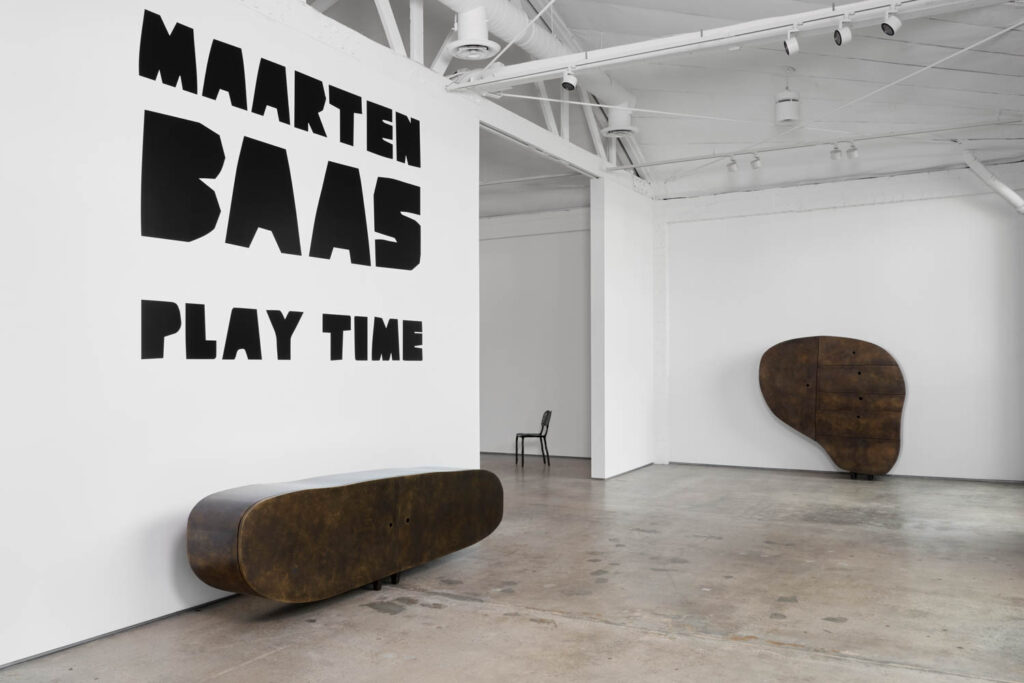
ID: The forms at the new show carry a similarity with children’s drawings—they are liberated from adulthood’s obsession with precision and sharpness. Has it been a challenge for you to free yourself from adulthood burdens while turning the sketches into products?
MB: Yes, it has been a challenge. This is actually a challenge for everybody—life is designed in such a way that we start with a very beautiful world in which fantasy and everything else can live. And for the rest of our lives, we strive for that same freedom while we have a blueprint for how life should be lived. Trying to get back that freedom is a challenge for many people and it requires confidence. This “carrot dangling in front of us carries us forward.” I made this approach my profession to see if I can make a language for myself which translates the thoughts about where and how I free myself from rational thoughts, from criticism, from logics, from expectations. Yes, it’s challenging, but it’s also a nice way of working and living.
ID: Could you talk about your collaboration with children for this show?
MB: Of course, it was so much fun to work with 720 different children, having each draw a minute by hand. All children had different backgrounds, different nationalities, and slightly different ages, from four to 11. I was sometimes cracking up to some very funny drawings. Children who were shy sometimes didn’t know what to do, or there were very confident ones, too. So it’s really funny to see all the differences. The variety is the beauty of the collection, to have 720 different characters basically captured in one clock.
ID: Memory is another crucial element in your practice and this exhibition. How do you approach to a subjective and internalized notion like a memory as a designer of utilitarian objects as well as an artist?
MB: Memory is, indeed, a very subjective thing. Even if two people remember the same thing, they remember them from different perspectives, sometimes even totally opposites of one another. I take the liberty to just use my interpretation from a memory which is not about what factually was in a memory. In fact, it’s all just a matter of experience and a matter of how you interpret certain happenings, and for me, that is a nice starting point. It brings inspiration and new ideas. I’m not a journalist or historian. As an artist, I feel free to to make my own interpretations.
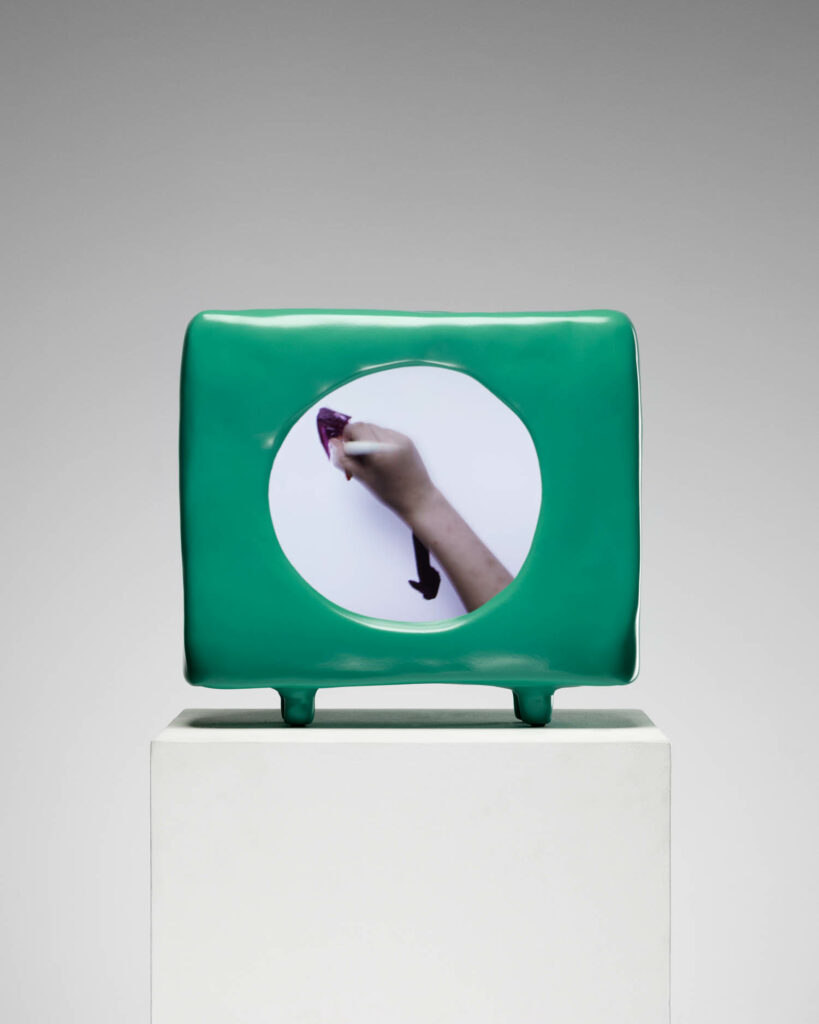
ID: Works like Grandfather Clock and Real Time The Artist strongly flirt with the space of sculpture. Do you have different approaches to works with utilitarian aspects than those that are solely artistic?
MB: I make functional works and autonomous artworks. Function is not always their main part. I think it’s fairly nice if the clocks are running synched with time because that adds a layer of magic—that dependence to 12 hours is a part of the work. If you really want to have a regular clock, you can buy one for 10 euros and you have your time, but it’s not about that. It is about the story that time can tell. Same goes with the clay furniture as well: the fact that you can actually use them is an added layer to the artistic value. I also make works which are not even supposed to be functional. I like to explore as many sides as possible, and function is not the most important one. However, I sometimes receive special requests for functionality in private commissions. Then I take function into account.
ID: Real Time The Artist is also about performance. What is the role of performance in your work?
MB: Performance is indeed an important element. Especially the work The Artist was made for the Venice Biennale in 2019. I am in that clock as an artist, paying. Artwork is evolving minute to minute whileI’m inside the clock. Artists always try to be ahead of time or to reflect the momentum of time. At least that’s how I have always approached my work. I try to be an ambassador of the time we’re living in and how we experience it. But we’re also always behind because time is always faster than us. So this man in the clock is me as an artist trying to capture time. I like telling stories through my work and performance is a very important part of it.
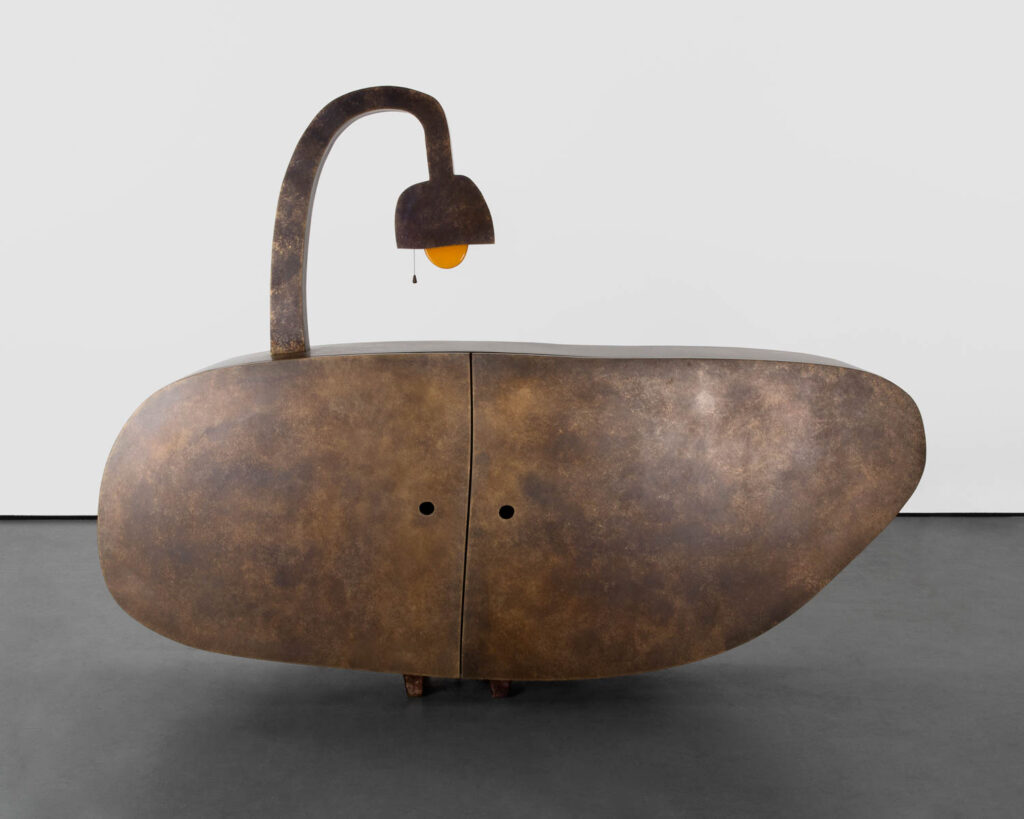
ID: How do you see the clock’s significance as a symbol of time but also for play as an authority of keeping track of time?
MB: The Real Time Series started with the idea that time is something very abstract. Time is everywhere, always there. We are occupied by it subconsciously, all the time we aware of the fact that time is running and we have a limited amount of time on this planet. We try to make the best out of it. Yet still, there’s a suggestion of measuring time or capturing time in a clock, and we have this agreement with each other that a minute is a minute and an hour is an hour. And that’s why we have the suggestion of an idea about a concrete concept of time, but it’s not concrete at all—every minute is a different experience. Every minute, there’s a unique happening with unique moments. And once that minute has passed, there is nothing of it anymore. I like to play with these ideas. All my works are telling a new story about this experience of time and what time means and the fact that time is a human made concept
ID: Brass holds traces of time. How does brass help you convey your statements?
MB: I’ve worked with brass and bronze which are, of course, very sculptural materials. I contrast this with the very naive way of working to turn them into a sculpture rather than furniture. I often develop my own techniques within these materials. Moreover, I liked the effects that I can do with it just aesthetically—it’s a beautiful material to work with.
Maarten Baas: Play Time is on view through May 26, 2023.

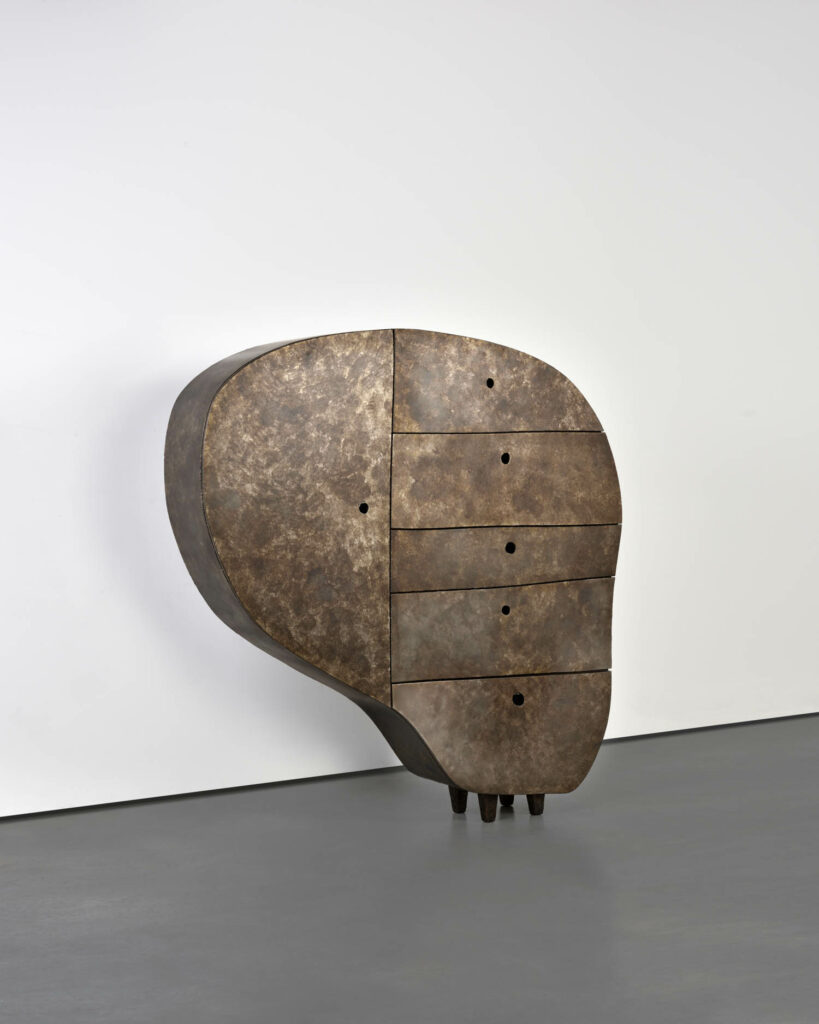
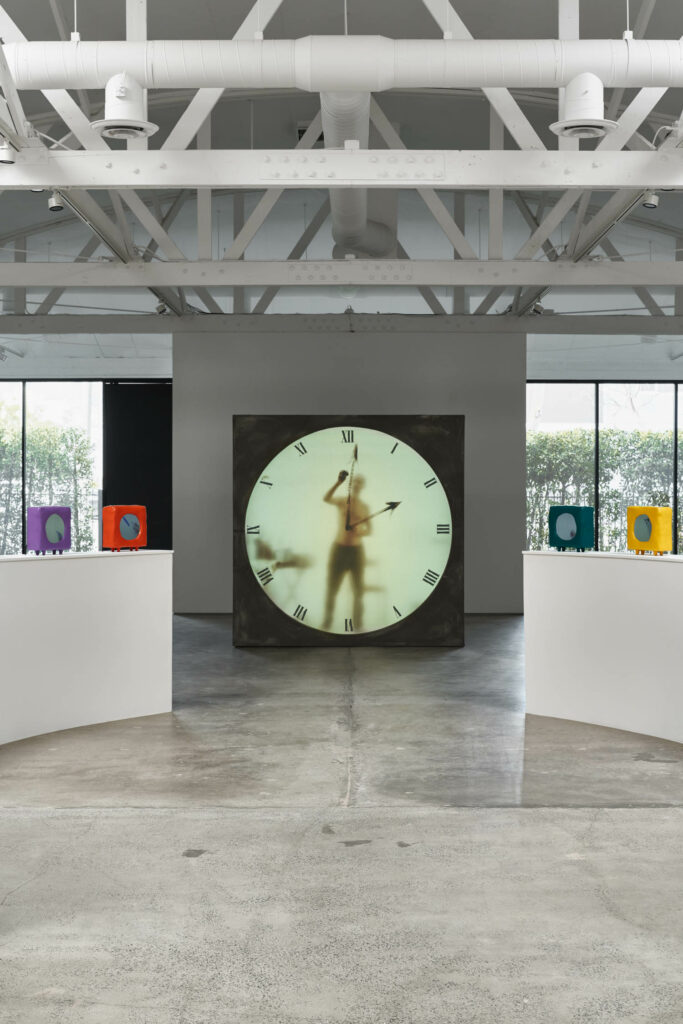
read more
DesignWire
11 Highlights from Dutch Design Week 2022
See 11 highlights from this year’s Dutch Design Week, the festival’s 20th anniversary features the work of over 2,600 designers.
DesignWire
Claudy Jongstra: 2022 Interior Design Hall of Fame Inductee
Dutch textile designer and artist Claudy Jongstra is inducted into the Interior Design Hall of Fame. See her impressive body of work so far.
DesignWire
11 Finds at ‘i am u are’ Ukrainian Creators Fair
An upcoming design exhibition, “i am u are,” will represent the mindset of modern Ukrainian design and creativity, while showcasing its diverse heritage.
recent stories
DesignWire
10 Questions With… Jonah Markowitz, Production Designer For HBO’s New Crime Thriller
Ride along with Jonah Markowitz to see how this production designer effortlessly builds immersive worlds for projects like HBO’s Duster.
DesignWire
Pierce Brosnan’s Enduring Passion Takes Shape In New Porcelain Series
See how James Bond actor Pierce Brosnan teams up with designer Stefanie Hering to produce a handcrafted collection of vases with proceeds going to charity.
DesignWire
Interior Design Hall of Fame Members: View by Year
From the past to the present, meet the celebrated names and trailblazers who have all been inducted into the Interior Design Hall of Fame.
